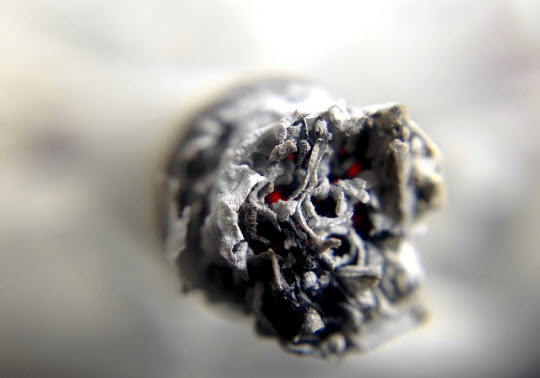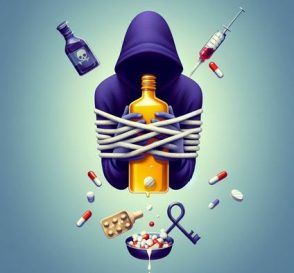Marijuana also commonly known as cannabis is a highly abused drug. About 3% Indian population and 119.6 million users worldwide consume one form or the other of marijuana. Marijuana is obtained from the dried leaves, flowers and stems of the hemp plant, Cannabis Sativa.
The major chemical compound in the drug responsible for all of its mind-altering effects is tetrahydrocannabinol (THC). The concentration of THC varies from preparation to preparation. Marijuana contains 1-3% THC concentration. High dose consumption’s accentuate the risk of developing addiction more quickly. Marijuana addiction has become so prevalent worldwide, that it has now been included in the DSM-V (5th revision of Diagnostic and Statistical Manual of mental disorders).
A Beginning:
Marijuana though highly used by teenagers especially in countries like USA, is generally not very addictive. Research shows that use of marijuana usually precedes use of more addictive compounds viz. alcohol and nicotine or even opiates. Hence, it is also called the Gateway Drug. Even though, the addiction to the drug is rare, the potential threat of developing addiction is very real.

Medical And Mythical Importance:
A therapeutic drug when used wisely, marijuana has many medicinal properties. It is used for the control of nausea and vomiting in cancer patients during chemotherapy as well as for increasing appetite in HIV/AIDS patients. It also helps in chronic pain and muscle spasms. Though enough evidence is not available for the use of marijuana in the latter indications.
Marijuana and other forms of cannabis like ganja have been mentioned in the sacred Hindu texts, Vedas. They also find mention in a number of shamanic rituals of the ancient Indo-Aryans. Greeks mention marijuana as substances that were used to alleviate sorrows and grief.
What Is Marijuana Addiction?
When marijuana begins to be consumed over long periods of time and for uses other than medical indications, or high quantities are required for the same levels of effect, it is termed as substance abuse or more commonly, marijuana addiction.
It is characterized by 4 important patterns:
• Acute intoxication
• Dependency syndrome
• Harmful use
• Withdrawal state
How Marijuana is Consumed?

Marijuana is either smoked through hookahs, pipes or bongs. It included burning and inhaling the vaporized the cannabinoids. It can also be rolled up into paper joints or tobacco leaf-wrapped joints, which are lighted and smoked. Vaporizers heat cannabis sublimating the cannabinoid into vapor without burning the leaves. These fumes are inhaled.
Cannabis is also consumed as tea or ingredients in certain food preparations. These preparations contain low THC concentrations and the addiction potential is very low.
Substance Use Disorder: Symptoms And Signs
Acute intoxication:
It is a transient condition following administration of large doses of marijuana, dysfunctional behavior or perceptual disturbances, which include euphoria, anxiety, suspicious behavior, temporal slowing (rapid flow of ideas/impaired sense of time), impaired judgment and inattentiveness, slowing down of responses, hallucinations and depersonalization (dissociation from one’s personality).
One of the following signs must be present to classify it as acute intoxication:
1. Increase in appetite
2. Dry mouth
3. Eye infection, especially, conjunctival infection
4. Tachycardia and palpitations (increased heart rate and feeling of increased force of heart contractions respectively)
Dependency syndrome
A central characteristic feature is the desire to take the drug. A definitive diagnosis is usually made if at least 3 out of the following are present:
1. A strong desire or compulsion to take marijuana. It is often taken in larger quantities and over longer periods of time than intended.
2. Difficulties in controlling the substance taking behavior despite wanting to do so.
3. There is development of a physiological withdrawal state, as evidenced by features of withdrawal syndrome when the use of the drug is reduced or ceased.
4. Evidence of tolerance: Marijuana affects receptors in the brain. Consuming high concentrations or high quantities make the receptors unresponsive. As a result, higher doses are required to achieve the same effects.
5. Progressive neglect of other activities like school, college or social responsibilities.
6. Persistent use of marijuana despite knowing the overtly harmful physical, mental and social consequences.
7. Persistent drug consumption to avoid withdrawal or needing the substance for relaxation.
Harmful Use
When the drug is used, despite the awareness of its harmful medical and social effects, or its use in situations in which it may be physically harmful e.g. driving after drug consumption.
Addiction Test
Once high quantities of marijuana are consumed, it can be detected in urine for at least a period of 3 weeks. That is the time the body requires, flushing out the drug from the body. A complete and definitive diagnosis of addiction is made based on the above signs and symptoms.
Potential Risk Factors For Developing Addiction
Consumption of marijuana is usually found among the young adult age group. It is used to get a feeling of ‘high’ or ‘stoned’, alter perceptions, zap up the libido and desired effects of relaxation and euphoria. Wrong peer groups, overt mental and social burdens often push teenagers into the experimental use of marijuana, which soon develops into full-blown addiction, later in life.
How Is The Brain Affected By Marijuana?
Marijuana is a psychoactive drug that produces changes in brain function and altered senses. When inhaled, it goes from the lungs into the blood stream. From here, it crosses the blood brain barrier to reach the brain. Here, marijuana acts on the brain receptors that are required for normal brain functioning. By over stimulating these receptors, marijuana produces the feeling of high. Generally, the effects are felt within 30 minutes to one hour.
Other effects include:
• Feeling of restlessness and agitation associated with fine tremors
• Difficulty in thinking, understanding clearly and impaired ability to solve problems
• Altered senses viz. illusions and hallucinations
• Changes in mood. The person feels more anxious, there is paranoia, extreme distrust of others.
• Increased number of panic attacks and anxiety
• Poor movement coordination
• Increased drowsiness after an initial ‘high’.
Long Term Effects Of Marijuana On Brain
• Since, marijuana works on receptors that are involved in brain development, this process is hampered. It may reduce the ability to think and learn. Long term consumption of the drug, impairs memory.
• Recent studies have shown reduction in the IQ of individuals who are regular consumers of marijuana.
• As marijuana is a hallucinogen, it has been known to exacerbate schizophrenia.
• Marijuana reduces the sensitivity of dopamine receptors to dopamine, lowering the effects of the reward centers in brain. This leads to negative thoughts and emotions, lower life satisfaction and poor mental health.
• Poor physical health and higher number of relationship problems is commonly found among marijuana users. There is lack of positive motivation.
Does Marijuana Affect The Body?
Marijuana has a number of effects on the body as well. These include increased heart rate. Eyes become red and the pupils become dilated and react sluggishly to light. Smoking causes lung fibrosis and a number of lung lesions leading to difficulty in breathing and persistent cough. There is suppression of immune system, increasing the vulnerability to opportunistic and other infections. Prolonged use causes a reduction in male sex hormones and consequently, reduced sexual capacity.
Withdrawal Syndrome:
So far, classical signs and symptoms of marijuana withdrawal have not been defined. It is diagnosed by ruling out other medical conditions explained better by other mental illnesses and withdrawal from other substances. Withdrawal is defined by DSM-V as the occurrence of following symptoms within 1 week after cessation of heavy or prolonged use of drug or more than twice within a period of 1 year:
1. Irritability, restlessness, anger and aggression i.e. mood changes
2. Nervousness or anxiety
3. Depressed mood and not taking pleasure in any activity
4. Insomnia or disturbing dreams
5. Reduced appetite coupled with documented weight loss
6. Physical symptoms like abdominal pain, tremors, sweating, fever with or without chills or headache.
Treatment Of Marijuana Addiction
Since addiction is rare and very mild, no specific drugs are known to have useful effect on reducing addiction or alleviating symptoms of withdrawal syndrome. Management includes supportive and symptomatic treatment.
1. Appropriate Psychotropic drugs are used for psychotic symptoms like hallucinations, perceptual alteration and mood changes, that develop due to prolonged use.
2. Hospitalization is required in cases of acute intoxication or very severe withdrawal symptoms.
3. Psychotherapy remains the mainstay of treatment. This includes having personal conversations with trained psychologists, facing your problems and finding solutions.
4. Psycho-education including educating young adults about the effects of marijuana and preventing the vicious cycle of addiction is an important part of the treatment.
5. Antidepressants like Buspirone have been shown to reduce the symptoms of depression and relieve withdrawal symptoms.
To conclude, we can say that Marijuana addiction is very harmful for your body and family. Keep it away from yourself and live a sober and clean life. Do not forget to share this article on your network and leave your feedback through comments.



